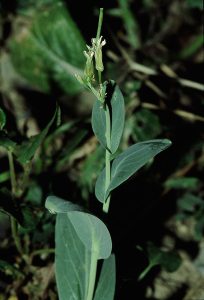
Conringia
Basic Information Common Name: Conringia Scientific Name: Conringia Native Habitat: Mediterranean Region History / Discovery / Cultivator Conringia, belonging to the Brassicaceae family, encompasses a
Common Name: Conringia
Scientific Name: Conringia
Native Habitat: Mediterranean Region
Conringia, belonging to the Brassicaceae family, encompasses a genus of flowering plants primarily native to the Mediterranean region. While not widely known for specific cultivators or extensive historical documentation like some horticultural giants, Conringia’s significance lies more in its ecological role and botanical characteristics. The genus was established and named by Johann Christian von Schreber, a German naturalist, in the late 18th century. Schreber contributed significantly to various fields of natural history, including botany, and his work in classifying and naming Conringia reflects his contributions to plant taxonomy.
The plants themselves have evolved within the diverse ecosystems of the Mediterranean, adapting to varied climates and soil types. They are typically annual or biennial herbs, exhibiting traits that allow them to thrive in relatively harsh conditions. Historically, such plants would have been recognized and utilized locally for various purposes, such as traditional medicine or agricultural practices. However, specific details about historical cultivation or widespread use are scarce.
The modern understanding and scientific study of Conringia continue to evolve, with ongoing research focused on its genetic makeup, ecological interactions, and potential applications in fields like agriculture and phytoremediation. While the genus might not boast a dramatic history of dedicated cultivation or grand horticultural achievements, its role within its native ecosystems and its ongoing scientific exploration ensure its enduring relevance in the botanical world. Its resilience and adaptability, inherent traits developed over millennia in the Mediterranean, speak to its inherent evolutionary success.
The plant’s origins are intertwined with the agricultural history of the Mediterranean. As a weed, it likely spread alongside crops, adapting to disturbed habitats created by human activity. Understanding its origins requires delving into the history of agriculture in the region and the movement of plant species along trade routes and through cultivation practices. While no single person is credited with “discovering” Conringia, its recognition as a distinct genus and its subsequent scientific study are a testament to the ongoing efforts of botanists and naturalists to document and understand the plant life around us.
Conringia orientalis, specifically, has been observed to grow in disturbed sites across the United States and Canada, indicating its ability to thrive as an invasive species, even at great distance from its original Mediterranean home. Its spread is likely facilitated by agricultural practices such as movement of contaminated seed and animal grazing.
| Category | General Requirement | Notes |
|---|---|---|
| Light | Full Sun | Needs at least 6 hours of direct sunlight daily. |
| Water | Moderate | Allow soil to dry slightly between waterings. Avoid overwatering. |
| Humidity | Low | Tolerant of average humidity levels. |
| Temp. Range | Cool-Moderate | Tolerates a wide range, ideally between 50-75°F (10-24°C). |
| Soil Type | Well-draining | Prefers moderately fertile, well-drained soil. |
| Fertilizer | Light | Rarely needs fertilizer; avoid over-fertilizing. |
| Toxicity | Unknown | Information currently unavailable. Handle with care until verified. |
Conringia species have adapted to thrive in the Mediterranean’s often harsh conditions. They typically possess a taproot system, enabling them to access water deep within the soil profile, a crucial adaptation in drier climates. Their leaves may exhibit a waxy coating or pubescent (hairy) surface, reducing water loss through transpiration, a common adaptation among plants in arid and semi-arid environments. Furthermore, their ability to readily colonize disturbed areas allows them to quickly exploit available resources in the wake of ecological disruptions, a valuable trait for survival in fluctuating environments. The relatively short life cycle of most Conringia species (annual or biennial) enables them to reproduce quickly and spread seeds before harsh conditions set in, ensuring the continuation of the population.
Propagation of Conringia is typically achieved through seeds. Seeds are readily collected from mature plants. The seeds are directly sown into the ground in the spring or fall. They can also be started indoors a few weeks before the last frost. Conringia is known to self-seed readily, especially if allowed to fully mature and the seed heads are left intact. Cuttings are not usually an effective method of propagation.
Currently, there is limited publicly available information regarding the specific toxicity of Conringia species to humans or common pets like cats and dogs. Due to this lack of information, it is advisable to exercise caution and prevent ingestion of any part of the plant by humans or animals. If ingestion occurs, contact a medical professional or veterinarian and the poison control center immediately.
Conringia is not typically considered a rare plant. It is widespread in its native habitat and can even be invasive in some regions. It is not typically sought after by plant collectors.
Due to its commonality and lack of ornamental appeal, Conringia typically holds little to no market value. It is primarily viewed as a weed in agricultural settings.

Basic Information Common Name: Conringia Scientific Name: Conringia Native Habitat: Mediterranean Region History / Discovery / Cultivator Conringia, belonging to the Brassicaceae family, encompasses a
